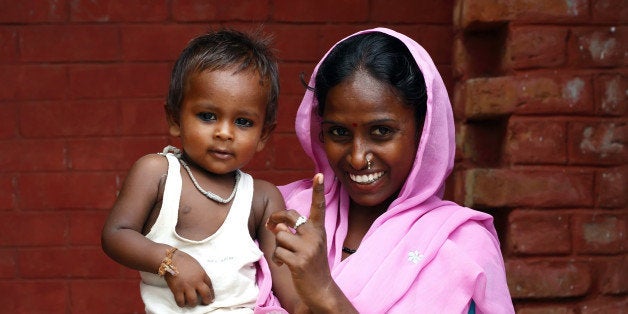
In early November, I spent a week in Ghana meeting with local advocates for gender equality. Some were academics, some had ties to government, some were running NGOs -- but all told me the same thing: they are starving for funding.
I've worked in the gender and international development space for over 20 years, so this sentiment is nothing new to me. But what is new is the rate at which I'm hearing about a lack of funding for grassroots women's rights organizations.
It feels to me that we're at a tipping point; there's so much potential right now for women and girls to see their full rights realized, but we will miss the moment if the groups that are doing the hard on-the-ground work are forced into failure because of a lack of resources.
That's why I was slightly heartened to read that the With and For Girls Collective has awarded $1 million to 20 grassroots women's rights groups in 19 countries. Hallelujah! This is exactly what should be happening, but on a much larger scale. Here's why: local women-led organizations are best placed to ensure aid and development happens properly, with local buy-in and in a manner that's sustainable and makes solid use of resources.
I know this from having seen it with my own eyes, but there's a sizable amount of research that says the same.
A landmark 2012 study by Mala Htun and S. Laurel Weldon of 70 countries over 40 years found that the mobilization of strong, independent feminist movements was a more important force in reducing violence against women than the economic wealth of a nation, the representation of women in government, or the presence of progressive political parties -- suggesting that women's collective voice is key in shaping public policy and government agendas.
AWID's research on funding for women's organizations show that women's organizations have a successful track record in promoting inclusive and equitable development, including breaking the culture of silence on rape and violence; changing and creating laws for women's rights; facilitating the creation of new institutional structures like women's commissions, women's ministries, and institutional processes like gender budgeting; and mobilizing local women and creating powerful networks and movements for positive change.
And yet another recent study found that the United States Agency for International Development (USAID) resource allocations for development assistance are driven more by Congressional and Executive branch directives than by local priorities.
So, to be very clear, the research shows that local women's groups have a tremendously positive impact on their communities and, particularly, for the women in them. But the research also shows that politics in far away lands (Washington, D.C.) largely drive funding for programs and efforts in developing countries.
The voices of women and girls living in poverty - their needs, preferences, priorities, interests, ideas, recommendations, and solutions - are rarely included in policy deliberations that result in goals, funding, and programs purported to be designed for them.
Without concerted efforts, only a very small fraction of international assistance will end up trickling down to local grassroots women's organizations that are already established inside communities and have begun identifying context-appropriate solutions to help families and communities thrive.
In post-earthquake Haiti, for instance, just 1 percent of international aid made its way to local organizations. Even less went to women-led organizations that address the needs of society's most vulnerable and marginalized populations, including women, children, and the elderly.
And yet, the track record for women's organization is clear. So why so little investment?
Governments in countries like the United States should quit short-changing local women's groups and allocate funds already intended for international development to go directly to the grassroots, community-based women's organizations that know what will work for their community members.
And lest this become just a "government" problem, let's all of us who care about women's rights globally also urge private foundations and donors to walk the talk and support local, grassroots women's organizations.
After all, there's just no better investment.
